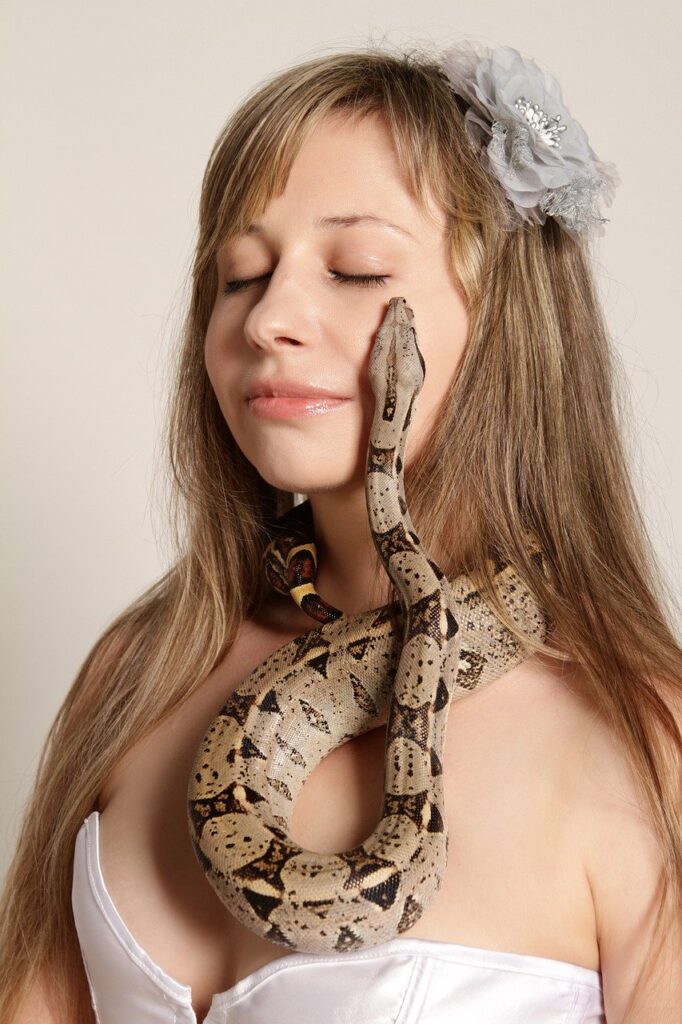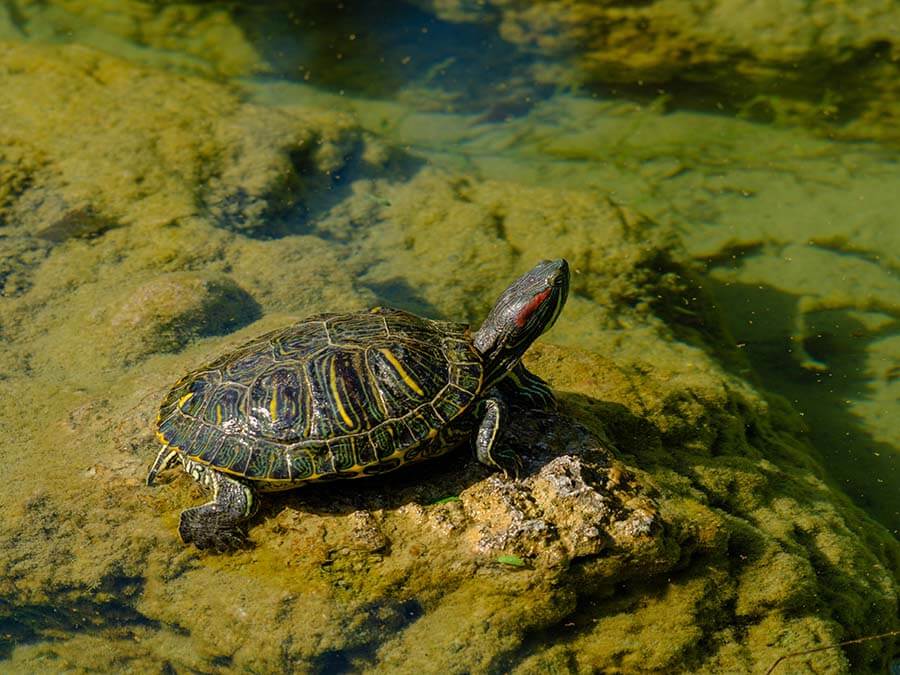Many people most likely don’t consider snakes to be pets. Although they are not for everyone, for those who can manage their low energy requirements and appreciate their unique look, snakes may be beautiful pets. If you are considering buying a snake, it is important to choose one that fits your residence, way of life, and degree of expertise. Here, we’ll look at the ten most popular snake species as pets and explain why they’re great companions. excellent choice.
Corn Snake
Corn snakes are known for their vibrant color and patterns, which are native to the southern US and can be any color from yellow to brown to orange and red. These snakes are the best choices for anybody seeking a pet because of their peaceful attitude, tiny size, simple feeding patterns, and low housing demands. Anyone seeking a low-maintenance pet snake will find them an excellent option because of their reputation for placidity and simplicity of handling. Though small in form, corn snakes are fascinating because of their incredible scale. They usually reach from three to five feet in length. Meal times go easy as they are not picky eaters and will consume frozen-thawed mice without any issues. Not only that, but all they really need for a comfortable and healthy house is a simple container with a temperature gradient. All things considered, someone looking for a pet snake would find corn snakes to be a fantastic choice. This is an excellent choice for anyone who aspires to own a pet snake.
Ball Pythons:
Ball pythons are a common choice for the people who like snakes as housemates. Native to Central and West Africa, ball pythons are very docile, with a range of morphs, a reasonable size, and an amazing lifetime. These are all the reasons they make fantastic pets. Ball pythons are a great option for all skill levels of snake owners because of their calm behavior and lack of hostility. Their many colors and designs provide fans with an exciting range of choices to suit their individual interests. Their normal length is four to five feet, and they are really easy to handle and maintain as pets. Ball pythons are a great option for anyone looking for a long-term friend and a fulfilling pet for snake enthusiasts, as, with proper care, they may live for 20 to 30 years.
The smooth green snake
The Smooth Green Snake is native to North America and has a very slender build. You can house it in a small 40-liter terrarium and feed it insects, but it does not tolerate long-term handling very well. It is best suited for those who wish to keep the reptile as a display animal rather than a companion. The Smooth Green Snake has similar care and temperament requirements to the Rough Green Snake. What makes this pet snake “difficult” is its availability, because they are quite rare. Only a few Smooth Green Snake breeders exist, and wild capture, in addition to being illegal, can be problematic for many reasons. If you’re a beginner and can get a good Smooth Green, it’s still a great choice. Despite their infrequent handling, their small size makes them easy to raise, quick to feed, and provides a great learning experience. Their maximum lifespan is 15 years, and their cost varies depending on where they come from.
The Ringneck snake
The Ringneck, another snake native to North America, has a noticeable yellow or orange ring on its neck (as the name suggests). They are very small; on average, they are about 30 cm long. These snakes feed on earthworms and require more heat and lighting than most snakes. They are generally docile and tolerate handling for short periods of time, but if handled for several minutes at a time, they can become nervous. Despite carrying venom to injure their prey, humans are not at risk. Their mouth and teeth are very small, so any attempt to bite your finger will be harmless. They are relatively rare and not as popular as other pet snakes. They can live about 10 years, but occasionally only live up to 6 years in captivity.
The Rainbow Boa
The Rainbow Boa is native to South America and is not usually recommended for beginners due to its shy and retiring behavior, but it does have other interesting qualities. First of all, these pet snakes are widely known and appreciated for their beautiful colors. In the right light, their skin is shiny and iridescent. They require specialized breeding and specific conditions of humidity and temperature due to their aptitude for a tropical habitat. Young reptiles may exhibit shyness, but frequent handling can tame them as adults. They require constant monitoring and care, but they are aesthetically very valuable reptiles. It is ideal for a beginner who intends to dedicate a lot of effort. Rainbow boas are typically just under two meters long and can live for more than 20 years.
The African Egg-Eating Snake:
The African Egg-Eating Snake, as its name suggests, feeds on bird eggs and nothing else. This is a rare and very specific dietary requirement. It is one of the few disadvantages of this pet snake. It is not very large, measuring 60–75 cm in length, and extends across much of Africa. They last up to 15 years. Feeding this snake in captivity is very difficult. You should buy finch or quail eggs, as chicken eggs are too large. However, this could be a good advantage if using rodents for the usual feeding of other snakes is an emotional limitation. They come from arid environments, so they do not require high humidity. Besides this, they have a passive way of defending themselves, relying on imitating the colors of more dangerous reptiles rather than attempting to bite. It is impossible for them to harm a human being. When regularly handled, they exhibit calmness and docility, making them easily manageable for a novice.
The Children’s Python
The Children’s Python, named after zoologist John George Children, is a medium-sized python, about 75–120 centimeters long, that inhabits rocky areas of Australia. This reptile eats mice or rats and requires basic care. They are not as brightly colored as many others, but they can make excellent pets, as they require little extra care and have a stable temperament, especially if handled frequently and gently. Children’s Pythons are perfectly manageable for beginner herpetologists. They can live up to 30 years and typically cost between $70 and $350 (depending on where they come from).
Rough Green Snake
This slender reptile, native to the southeastern United States and northeastern Mexico, can be quite long for its slender body, reaching up to 45 centimeters in length. It typically inhabits wooded areas. Unlike most pet snakes, it does not eat rodents because they are too large, so it feeds on insects and spiders. In terms of breeding and general feeding, this snake is easier to care for than others. They can live up to 15 years, although in captivity, many do not live that long. Since it can become stressed and frightened, this species is best handled rarely, despite its small size. They are a wonderful choice for beginners who would like to learn the basics of snake care and keep it clean and healthy, but not so much for someone who wants to handle it frequently.
Garter Snakes:
Garter snakes are wild snakes that are abundant in the United States. You can feed small fish and worms to these serpents. They have normal lighting and heating requirements. They typically grow to a length of 45–60 centimeters and weigh approximately 120 grams. They have a distinctive stripe running down their backs and tend to enjoy meadows, swamps, and woods, so they appreciate water in the terrarium. They enjoy basking in the sun, so they are one of the few beginner snakes that require a lamp. Although it is commonly referred to as a wild snake (rather than a pet), it is also very popular in captivity. Even in the wild, they are mostly harmless and very easy to tame. They are a great pet for beginners and easy to handle due to their gentle and docile nature.
Milk Snake:
Like the California King, the Milk Snake is actually a species in its own right.They are native to the United States and Mexico and commonly have black, white, and red body rings. Often found in woods or rocky areas, they do not necessarily like to sunbathe but prefer to absorb the heat of rocks and logs; a heater under the terrarium may be better than a lamp. Otherwise, they have very basic care requirements and live up to 20 years. This reptile is not very large; it can grow up to 60 centimeters. Like other species, milk snakes are very docile and rarely bite. They are certainly manageable for a novice herpetologist and typically cost between $50 and $200.
Conclusion:
When selecting a snake as a pet, factors such as temperament, size, and maintenance requirements must be considered. You can find a snake that suits your snake knowledge. The snakes mentioned in this article are not only fascinating to see but also easy to care for because of their reasonable proportions, placid natures, and simple demands. Choosing a snake that matches your lifestyle and degree of expertise will allow you to spend many years enjoying the company of your favorite reptiles.










